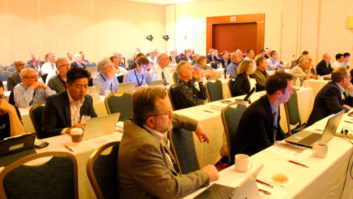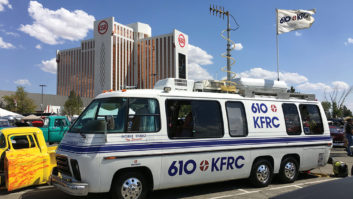Fred Jacobs is founder of Jacobs Media. This article originally appeared on the Jacobs Media blog.
Over the weekend, I did something I haven’t done in six years. I went shopping for a new car.
Six years ago in 2010, I leased a Ford Edge, equipped with MyFordTouch. It was a great initiation to the “connected car” — a chance for me to better understand how in-dash technology will change audio options while driving.
While the media options in my Edge were impressive, the system was clunky at times, the voice commands were inconsistent, and even finding AM and FM stations was a chore. And the experience forced me to gain a better understanding of the User Experience (UX), mastering how to talk to the car, and other issues impacting my interface with media and entertainment in the vehicle.
Three years later, I ended up leasing the very same vehicle — just three years updated. And very little — if anything – had changed with the MyFordTouch system.
During the past few years, Paul and I have interviewed numerous auto dealer owners and chief executives, car salespeople, and vehicle trainers. So, I’ve gotten an excellent sense of how radio is impacted by dashboard technology and the training process. This area has become a focal point at conferences like DASH, as well as in “connected car” presentations we’ve shown industry-wide.
But I hadn’t taken a test drive in some time, nor had I engaged in a conversation about features in new cars at the dealership level. I found myself at a Lincoln store here in Metro Detroit, looking at the beautiful MKZ. My salesperson — let’s call him “Don” — was kind enough to hand me the keys, telling me to enjoy the car for as long as I desired until they closed for the night.

So off I went. And it’s quite a nice vehicle, even though I can’t come close to replicating the experience Matthew McConaughey driving the MKZ while listening to Classic Rock songs.
Once away from the dealership, I pulled over at a strip mall and in 15 seconds paired my phone. I then pulled out an iPhone cable and in even less time, I was connected with Apple CarPlay. It’s that quick and easy. And I experienced just how that dashboard ecosystem takes over your touchscreen – and at the same time, pushes broadcast radio out of the picture entirely.
In an interesting aside, I had the CarPlay-enabled WMMR app that jācapps developed on my iPhone. Unlike some of our demos, it ended up on the “front page,” right alongside Apple Maps, iTunes, Podcasts, and the phone and text apps. So I was feeling good about this car.
But I wanted to see how FM radio sounded – and looked – so I unplugged my iPhone and the new and improved SYNC 3 interface appeared. I selected FM radio and immediately noticed the absence of album artwork and artist/title information. A quick switch to satellite radio, and Sirius was providing me with vivid artwork and a much cleaner interface. But it was obvious this incredibly well-appointed car did not have HD Radio.
So when I brought the MKZ back to the dealership, I told Don that I was going to need HD Radio in my car. And he told me the vehicle I test drove was equipped with HD Radio, that it was standard in all the MKZs. I explained to him what the touchscreen should have looked like and informed him the AM/FM display was sadly analog. After consulting the brochure and speaking to one of his tech people, Don realized that, in fact, HD Radio is an option that’s offered on the next tier of features — for obviously, a higher price.
Now Don is a very experienced salesperson. He’s been selling cars for many years. And he felt bad that he didn’t know more about HD Radio. And then I asked him this question:
“Am I the first person in the many years you’ve been selling cars to ask about HD Radio?”
And he quietly responded, “Yes.”
So it takes someone in radio — in fact, someone who is reasonably knowledgeable about “connected cars” — to even bring this up. What happens with the other 99% of car buyers who walk into this and other car dealerships?
Clearly, the audience, car dealers, and many people in the radio business know little about digital radio and its impact in cars. When a driver plugs in Apple CarPlay, broadcasters only appear if their app has been modified to show up on the display. But once she returns to the car brand’s ecosystem, how do AM and FM stations compare and compete with Sirius/XM, Pandora, Spotify, and the myriad other choices in front of the driver? Over time, the impact on local radio will be erosive because the look and feel of AM and FM stations is so inferior to what they’re seeing every time they select digital and satellite channels.
If you don’t think this is a big deal, think again. Our recent round of interviews in our partnership initiative with PRPD — the Millennial Research Project — strongly suggests that for young people, the car is just about the only place left where they engage with broadcast radio terrestrially. But as more and more cars hit the road equipped similar to the vehicles I’m test driving, radio will be challenged like never before. And it’s important to understand that in their quest to appeal to Millennials, car makers are offering great dashboard technology in their entry-level vehicles.
Broadcasters big and small, in concert with the NAB, need to get serious and strategic about their automotive relationships on both the OEM and dealership levels. Token sessions and presentations at industry conferences only pay lip service to a challenge that will only intensify as the years go on.
So now I’m looking at forking over more money each month for the privilege of driving a vehicle for the next three years with HD Radio.
Sadly, few others will likely travel that same road. And in fact, most drivers won’t even know what they’re missing.











